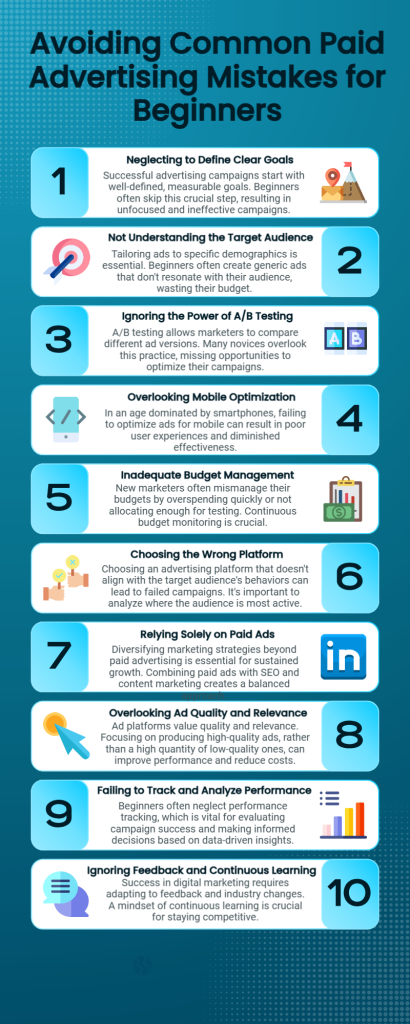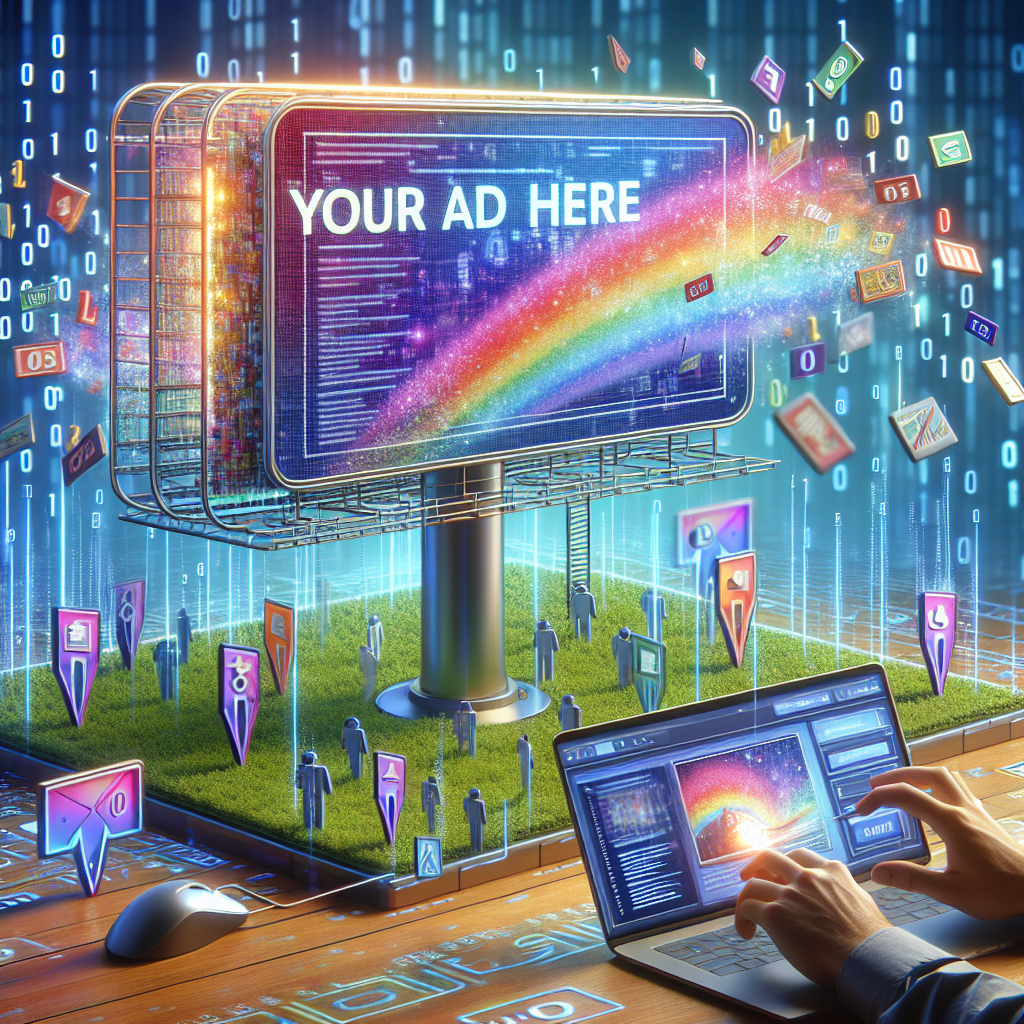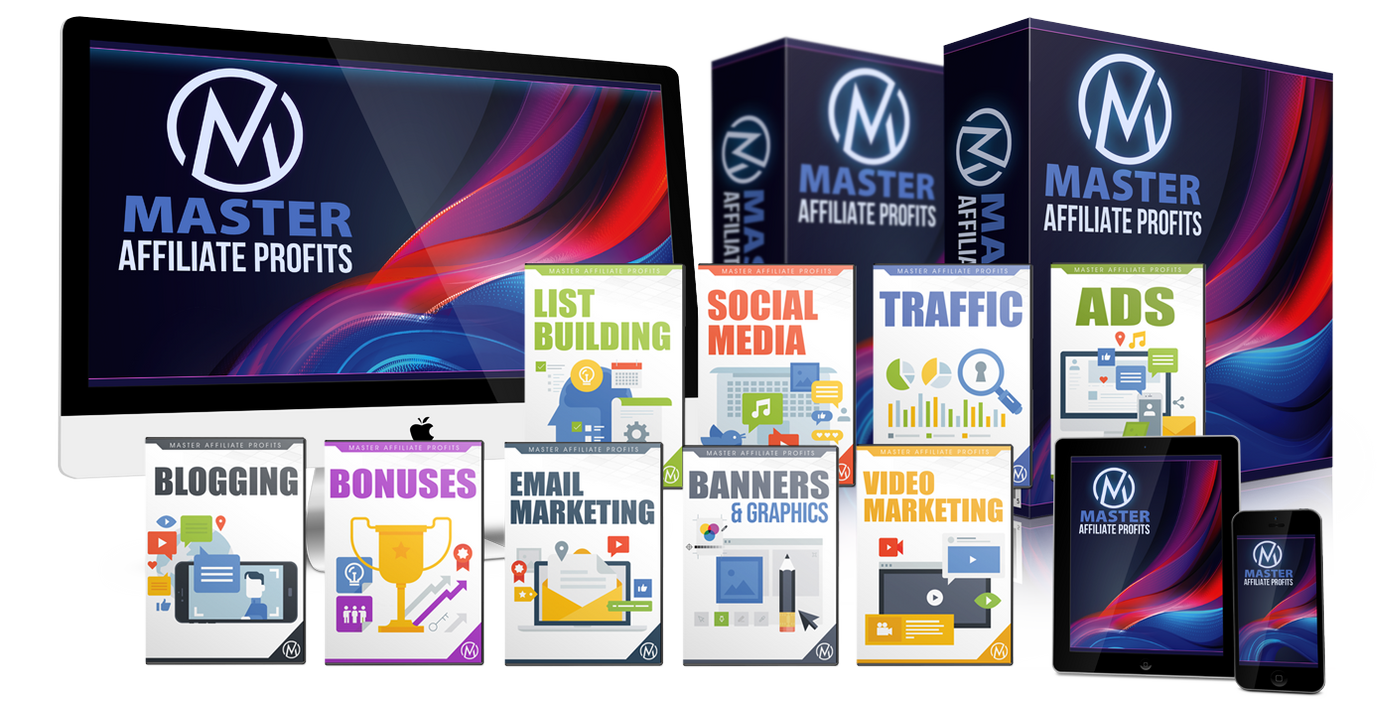Avoid the Pitfalls: Top Ten Paid Advertising Mistakes Beginners Make
By Duncan Whitmore
Paid advertising offers a golden opportunity for online businesses to gain visibility and boost sales.
Indeed, not only can such businesses typically earn $2 for every $1 they invest in paid advertising, but users clicking on a PPC ad are 50% more likely to make a purchase than a user arriving via organic search.[1]
However, the path to a successful paid advertising campaign is paved with potential pitfalls, especially for those just getting started.
It’s therefore crucial for internet marketers to understand these potential mistakes to steer clear of them.
So let's explore the top ten mistakes internet marketers should avoid when diving into the dynamic world of paid advertising.
1. Neglecting to Define Clear Goals
Before launching any advertising campaign, the first step should always be defining clear and measurable goals.
Whether it’s increasing website traffic, boosting brand awareness, or driving sales, having a precise objective helps in crafting a strategic approach.
Many beginners overlook this step, often leading to ineffective campaigns. Defining goals also allows marketers to measure the effectiveness of their campaigns against the original aim.
2. Not Understanding the Target Audience
One of the most common paid advertising mistakes beginners make is failing to fully understand their target audience. Tailoring ads to appeal to the right demographic is crucial.
This means knowing what your audience values, their online behaviors, and how they engage with content.
Without this critical step, marketers end up crafting generic ads that fail to resonate, resulting in wasted budgets and poor campaign performance.
3. Ignoring the Power of A/B Testing
A/B testing, or split testing, is a method of comparing two versions of an advertisement to see which one performs better.
Despite its importance, new marketers often skip this practice. A/B testing can provide vital insights into what messages, images, or formats best engage your audience.
By testing different elements, marketers can optimize their campaigns for better performance and higher returns.
4. Overlooking Mobile Optimization
With the dominance of smartphones, ensuring that advertisements are mobile-friendly is no longer optional. Many internet marketers make the mistake of designing ads primarily for desktop viewing, ignoring how they will appear on mobile devices.
Such an oversight can result in a poor user experience and reduced engagement. Optimizing ads for mobile ensures reaching audiences exactly where they spend most of their time.
5. Inadequate Budget Management
Budgeting can be tricky, especially for those new to paid advertising. Some marketers either spend too much too quickly or fail to allocate enough budget to test the effectiveness of different strategies.
It’s essential for you to set a realistic budget and monitor spending continuously. Using data-driven insights to adjust budget allocations can prevent overspending and help in maximizing returns over time.
6. Choosing the Wrong Platform
Different advertising platforms cater to different audiences. One size does not fit all. For instance, while LinkedIn might be perfect for B2B marketing, Instagram may prove more effective for visual consumer brands.
Beginners often choose the wrong platform based on popularity instead of assessing where their audience is most active. Analyzing past customer interactions and leveraging platform-specific data is key to selecting the right outlet for campaigns.

7. Relying Solely on Paid Ads
While paid ads are powerful, they shouldn’t be the entirety of a marketing strategy. Relying exclusively on paid ads can lead to stagnation.
Complementary strategies such as SEO, content marketing, and social media engagement are vital for sustained growth.
Building a comprehensive marketing plan ensures that there's support for advertising efforts that feed into organic growth, providing balance and long-term results.
8. Overlooking Ad Quality and Relevance
Google and Facebook, among others, emphasize ad quality and relevance – factors that affect ad visibility and cost. Some beginners focus too much on quantity over quality, pushing out numerous ads without ensuring they offer value and relevance to the audience.
High-quality and relevant ads improve user experience and increase engagement rates, making ads more competitive and lowering costs.
9. Failing to Track and Analyze Performance
Without tracking how your ads perform, it's impossible to know what's working and what's not. Many beginners fail to set up proper analytics or only glance at high-level metrics like impressions or clicks without understanding deeper insights.
Performance tracking is critical for identifying which elements of your campaign need adjustment and for making data-driven decisions. It’s about integrating tools that can provide detailed analyses and using these insights to refine strategies continuously.
10. Ignoring Feedback and Continuous Learning
The digital world is always changing, so stagnation is a recipe for disappointment. Internet marketers who succeed are those who continuously learn from feedback and industry changes.
Ignoring feedback from customers or failing to adapt to new advertising trends can lead to falling behind competitors. Embracing a mindset of continuous improvement and a willingness to adapt is essential to stay ahead in paid advertising.
BONUS MISTAKE: Failing to Capture the Lead
This may be the biggest mistake of them all.
Never send paid traffic directly to an offer. Always capture the lead through a squeeze page first.
That way, you can continue to market to them via email, potentially making sales well into the future.
Conclusion
Avoiding common paid advertising mistakes that beginners make can set the foundation for success in your Internet marketing ambitions.
By defining clear goals, understanding the target audience, engaging in testing, and leveraging analytics, internet marketers can create powerful campaigns that deliver impressive results.
Staying informed and agile in strategies will ensure that paid advertising remains a valuable and effective tool in a marketer's toolbox. So by avoiding these common errors, marketers can create more impactful and cost-effective campaigns that stand out in today’s competitive marketplace.
* * * * *




